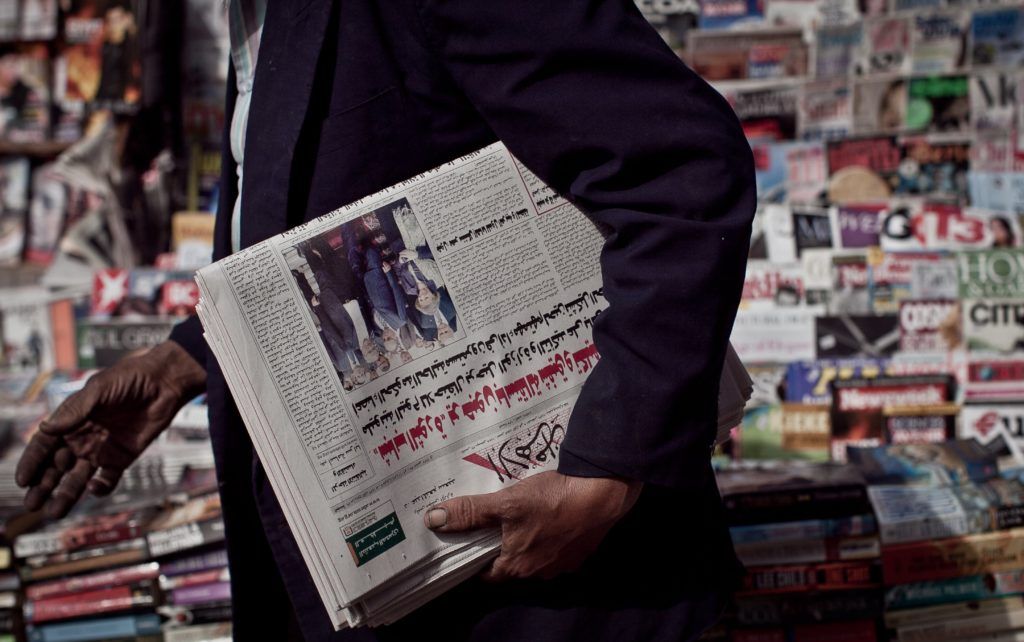Last Friday, 9 September, or the Friday of “Correcting the Path of the Revolution,” was a day full of events. Amid the accompanying media circus, the death of novelist Khairy Shalaby slipped through the news cracks. The Nobel Prize nominee, who enriched Arabic literature with his books and articles, eloquently articulating Egyptian reality, was drowned out by cheering crowds fighting for their civil liberties. No one stopped to pay respect to this monumental figure who is nothing short of a national treasure.
The marginalization of Shalaby’s death in the news seems to reflect a sidelining of intellectuals in Egyptian society. A society with a strong intellectual core evokes an image of modernity, but in Egypt a hegemony of conformism reigns, forcing intellectuals into exile.
One could attribute Shalaby’s choice of topics to the intellectual’s eternal state of social alienation, his effort to narrate the Egyptian underworld – social sects largely subdued for the benefit of the bourgeoisie – as an effort to see himself in the mirror of the other and more specifically in the minute details that themselves constitute the notion of the other.
His ingenuity truly shines not just in portraying the Egyptian person, but in intertwining that person with the topology of marginalized places, producing an intimate and endearing connection between place and person that mutually influence one another. His ability to highlight the most aloof places and personalities and turn them into prototypes of humanity coincides with readers’ most inner being.
Place is very important to Shalaby. He dedicates “Batn al-Baqqara” – a narrative about a swamp in Central Cairo that was later transformed into the Azbakia district – to his cousin Sheikh Ali Mohamed Okasha, for inspiring the form Shalaby had come to master, that of the geo-novel.
“I was looking through his [Okasha’s] library as a six year-old child when I stumbled upon the first volume of Al-Maqrizi’s ‘Khitat.’ I was immediately fascinated by it; the book cover with the title was missing though, so I gave it a title of my own: ‘The history of houses and streets.’ I believe that the spontaneity of feeling in that title still guides my vision of this unique science: the science of cartography, the history of place.”
Shalaby expounds on the motives behind his fascination with place in “Batn al-Baqqara,” saying:
The ingenuity of place in Egypt imposes upon the writer the role of providing historical, geographic and social facts; information in uttermost precision, while the aesthetics of this place – the other side of its ingenuity – its streaming vitality, and mythical historicity that is rich with drastic events, both preceding and contemporary, compels the writer to be inevitably literary, due to the pure literary style that is inherent in this history, and this geography.
To Shalaby, the duty of narrating the place is a direct consequence of its dominating presence, a presence that does not necessarily overshadow the characters; rather it becomes a constituting element that is in turn continuously reconstituted by the characters. Therefore, the reciprocity of relations between place and person is an enduring process. The dynamism of the text compels the reader to bring in a new set of historical, social and geographic narration. With the reader being actively involved in the narration, the text becomes a narration of the self.
“Wikalet Attia” (Attia’s Wholesale Store) is but one example of Shalaby's fascination with the subject:
The courtyard reflects what is happening in each and every room, the scents, the echoes of the water pipe's crackle, the banging glasses, the resonating laughter, the jingle of women’s voices, the hissing breaths, the origination of repressed cranky screams, and the voice of Om Kalthoum serenading to a very deep end: Ya Zalemni (Oh, you who wrongs me). All this and the sky-colored smoke clouds create a tent of astounding peace and safety, all these creatures are embryos rolling in a womb. This is what I imagined as I enjoyed my marvelous sitting in my room, as if I’ve reached for the first time in my life a true moment of solitude charged with beautiful calmness.
The interplay of sound, color and scent allows the narrator to reach a true epiphany of his being. His mood is charged with all the varying elements as if it was the courtyard itself, a repeated sentiment that Shalaby encounters when discussing other places. The place becomes the mirror through which the narrator is able to see himself distinctly. But the readers play an active role in the plot as well, captivated in a place where time seems to halt, leaving them with an ability to reflect on their own lives.
Shalaby's continuous use of first-person narration is another tool that requires readers to participate in the story. Readers see the story through the eyes of the involved narrator, rather than a more transcendental or omniscient perspective – which is detached and provides superior knowledge of all the characters.
A meticulous writer, Shalaby wanted readers to see the intricate details of places and characters. And since readers are only exposed to what the hero experiences, they become part of a weaved plot, rather than mere bystanders witnessing occurrences from a distance.
Looking back at Shalaby's death, a certain memory is evoked: his story of witnessing the construction of Cairo's Autostrade road, and how the government demolished some graveyards with bulldozers to make room for it. Skulls and skeletons were trampled upon as the bulldozers relentlessly destroyed final resting places. Shalaby was so moved by this desecration that he orchestrated a squad to collect those remains and re-bury them in a different place, as he details in “Batn al-Baqqara” and “Nasf al-Admegha” (Destroying Heads). Perhaps this was motivated by the peasant within him, that always buried and concealed things within the earth. Regardless of Shalaby's motives, one hopes that our quest for a new path – be it for democracy or building the Autostrade – will not force us to trample upon the remains of our heritage.



